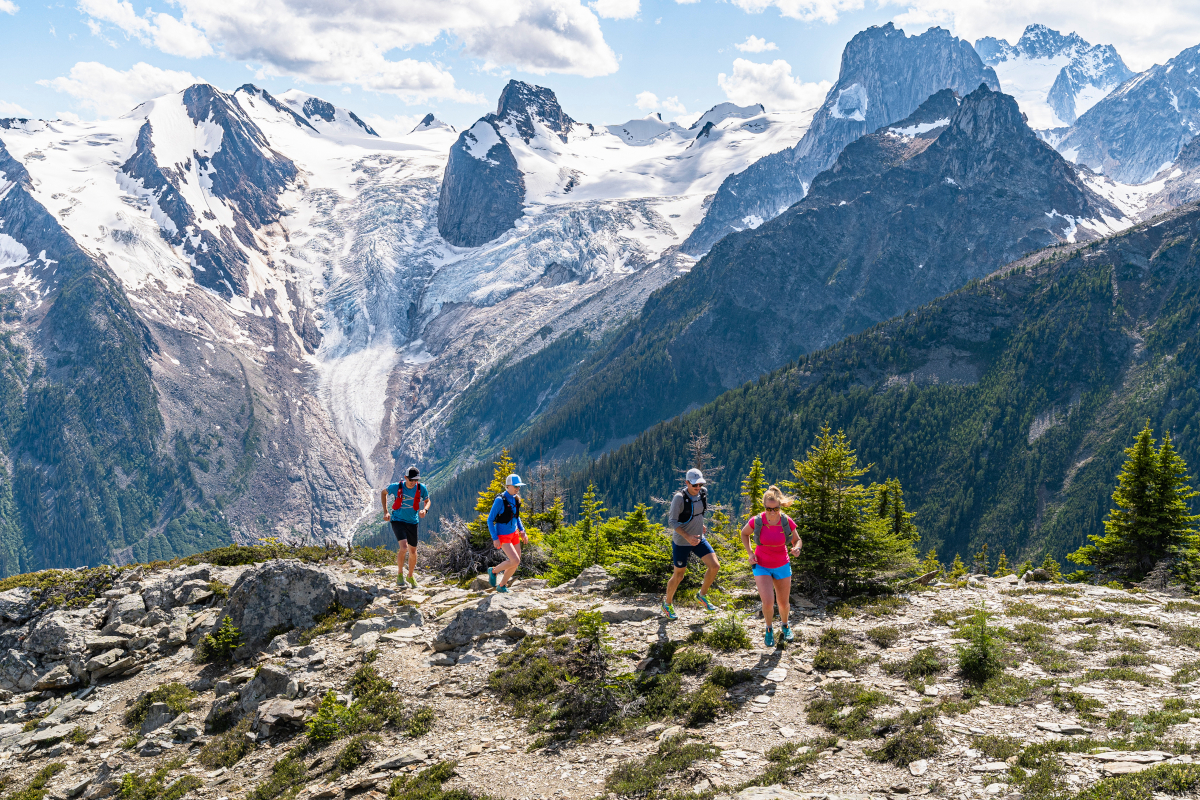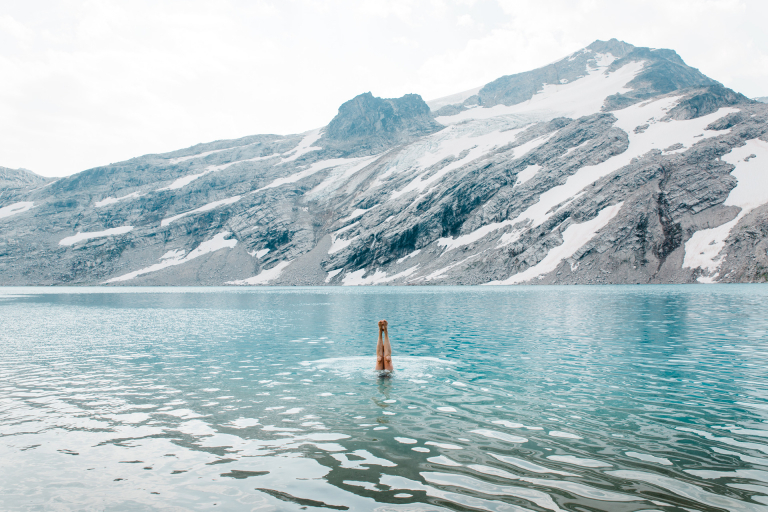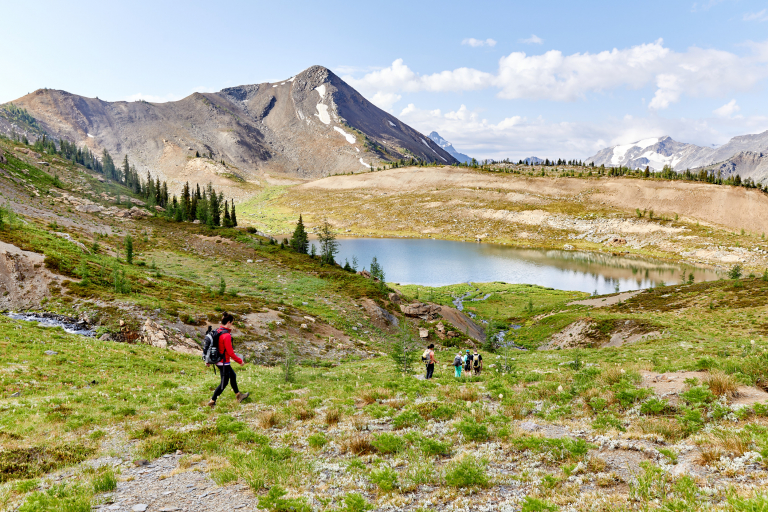Have you always wanted to try alpine trail running, but felt deterred by the list of items you’d need to carry in order to be adequately prepared in the backcountry?
CMH’s alpine trail running trips are heli-accessed and guided by ACMG certified guides, meaning you can leave the heavy lifting to the helicopter and enjoy the luxury of running light with a streamlined kit.
Forget about lugging a shelter, fire starter, extra water, and your emergency satellite communications gear along the trail. Instead, bring only the essentials and relish travelling lightweight.
Here are 6 items we recommend including on your packing list for a CMH guided alpine trail running adventure:
Packing checklist
1. Trail-specific running shoes
High in the alpine, expect to travel over a variety of terrain. You’ll likely run over a mix of rocky, uneven ground, softer meadows and dirt trails. Your footwear needs to be able to keep up when the going gets wilder.
For this reason, trail-specific running shoes are a must (in fact, they’re a requirement!)
- We recommend mid to low-ankle trail runners.
- Trail shoes typically feature a rigid rock plate on the sole for added protection against rocks and roots, as well as ‘sticky’ rubber lugs to beef up traction.
“It’s so important that the gear you plan to run in is stuff you’ve worn before and you’re already comfortable with,” advises CMH trail running guide Emily Compton.
Ie: don’t snip the tags off a fresh pair of kicks right before your trip, which could cause potential run-ruining blisters. Instead, leave yourself ample time to run in any new gear multiple times before you go. This especially applies to breaking in shoes, but it’s also important for items like a new pack or a never-been-used hydration system.
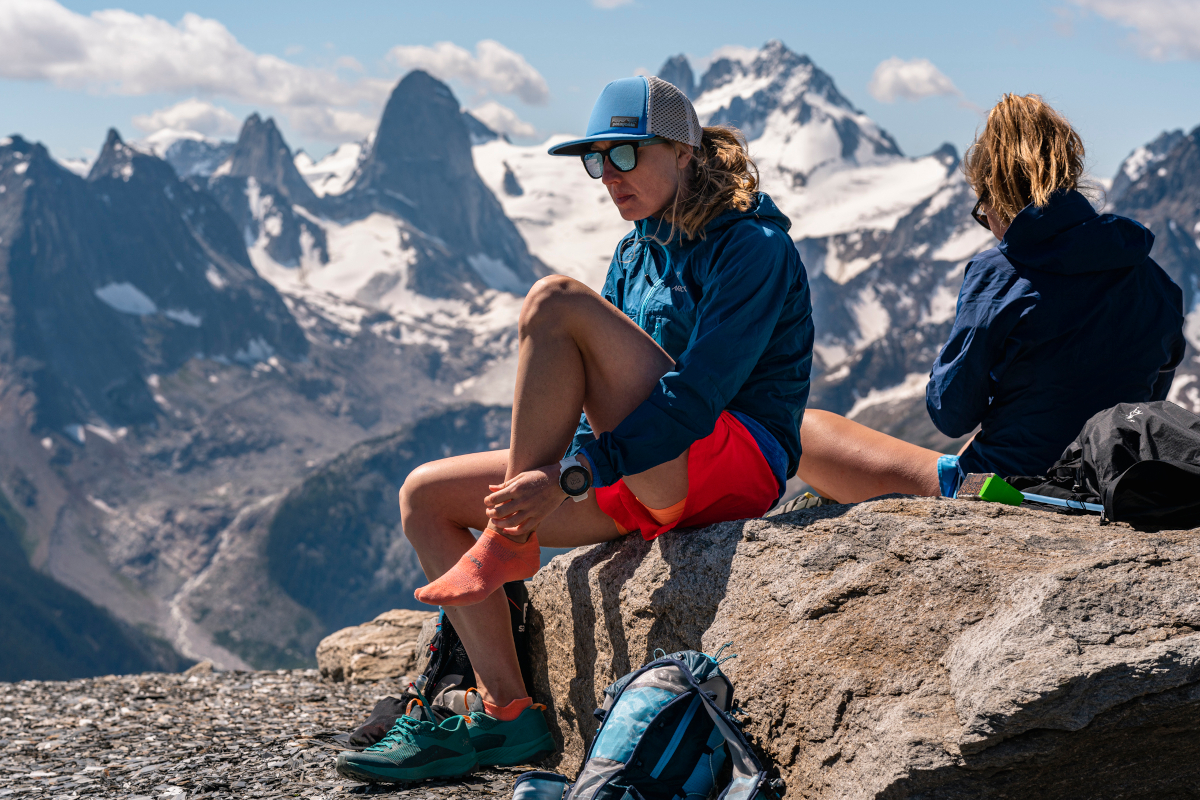
2. Layers
“Trail running in the mountains means being prepared to add and drop layers through different weather,” Compton says. “The weather can change several times, sometimes even within the hour.”
For example, you might start your run down lower in a protected basin but soon find yourself on a windy ridge after climbing higher. To keep your body temperature consistent and comfortable throughout, plan to pack a few key items of clothing:
- Wool mid-layer top
- Wind/rain breaker
- Gloves
- Hat
- A fresh pair of socks
A good rule of thumb is to pack as though you’re heading out for a crisp, fall-time run. Even though our guided trail running trips land during the summer months, this approach will ensure you’re ready for ever-changing mountain weather, rain, wind or shine.
3. Personal-preference energy snacks, gels, powders or bar
We’ll provide daily energy drinks, extra water, snacks and lunch, but if you have a particular energy booster (snacks, gels, bars) or drink powder that you can’t run without, bring a stash with you.
“Runners tend to know what agrees or disagrees with their stomachs when running,” Compton says. “I’d encourage guests to pack any personal favourite energy products for the trail that might help them avoid known sensitivities.”
4. Running backpack, running vest or waistpack
Even though you’ll be travelling lightweight, you’ll need something comfortable to carry your clothing layers, water and camera in. For this, Compton recommends a running-specific backpack, a running vest, or a running waistpack.
Running packs and vests are typically lighter and more low-profile than packs you would take on a day hike. They will also have strategically placed pockets for stashing gear and water so it’s evenly weighted while you run.
Like shoes, your pack is something you should have already clocked some time running with, to make sure the straps fit comfortably, and to ensure nothing rubs or chafes (ouch!).
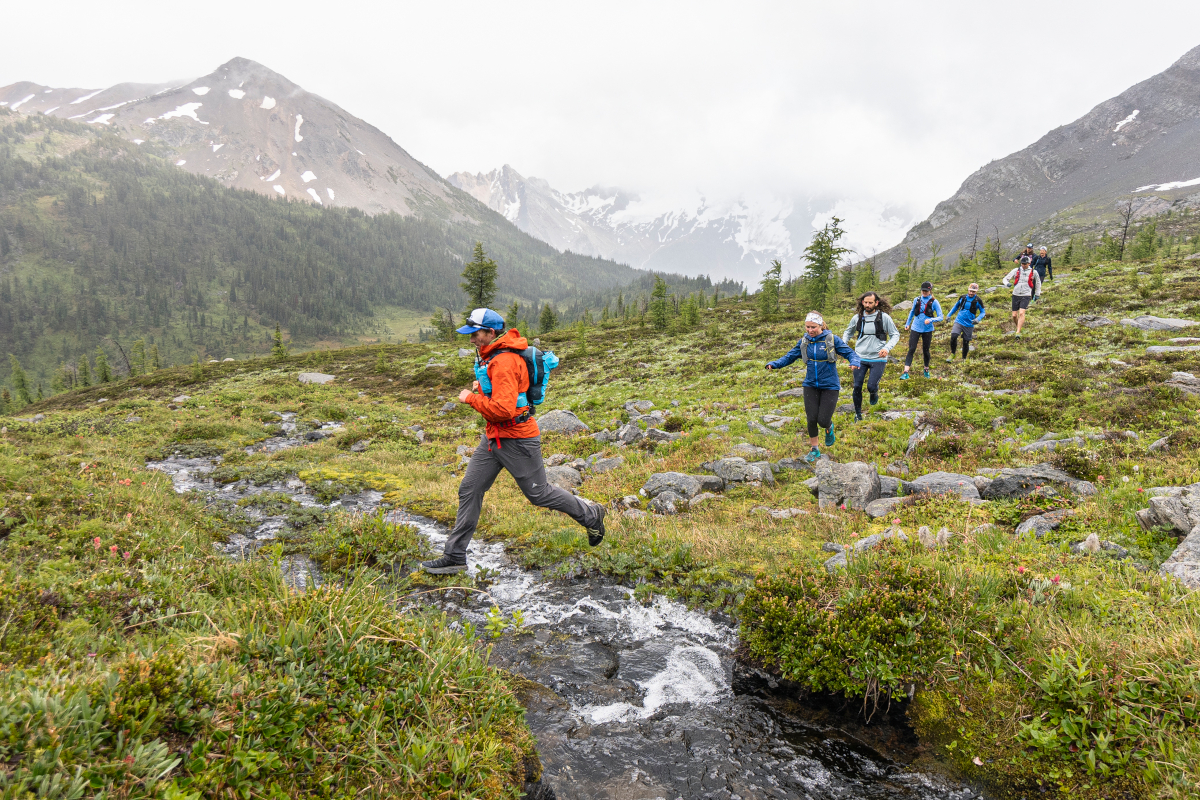
5. GPS watch
This suggestion is by no means a requirement, but for many runners, using a GPS watch to clock elevation gain, heart rate, and kilometres/miles run is all part of the sport.
“It’s no secret that a lot of runners are data-driven,” says Compton. “It can be pretty cool on these trips to review your stats at the end and see what you did.”
Of course, if your goal is to totally unplug and fully immerse yourself in the scenery, leave the watch behind and let your guide worry about what time it is.
6. Camera or cellphone
Your trip is about bucket-list trail running, but it’s also about seeing rarely visited places dotted with azure blue alpine lakes and colourful swaths of wildflowers.
“We don’t want people rushing and missing the incredible areas we’re running through,” says Compton. “We want people enjoying the day out. Taking photos. Taking in the view.”
Be sure to pack a small camera or cellphone camera. Your group will stop periodically to for scenery snaps, or you can always pull over briefly if you see a not-to-be-missed photo opportunity.
Months later, you can flip back through your photos and remember the sensation of the heli peeling away, dropping you high in the alpine with your shoes pointed towards endless ridgelines and lush meadows.


